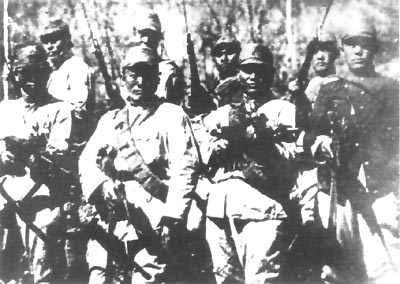|
On September 18, 1931, a section of railroad owned by Japan's South Manchuria Railway was blown up in northeast China, near the city then known as Mukden, today's Shenyang, in Liaoning Province. The Japanese immediately accused the Chinese soldiers garrisoned nearby of setting the explosives, and attacked them with the excuse that Japanese property must be protected from assaults by the Chinese.
The event is known as the September 18 Incident, or as the Mukden or Manchurian Incident.
Strong evidence indicates that it was actually the Japanese Kwantung Army that conspired to cause the blast and use it as an excuse to annex China's northeast (then called Manchuria), setting up the puppet state of Manchukuo in 1932.
Zhao Yiman, who was born in 1905 and joined the Communist Party of China (CPC) in 1926, went to the northeast following the September 18 Incident to lead the workers' revolutionary movements in Mukden. In April 1933, she led the Trolley Bus Workers Anti-Japanese Strike and the following year she established resistance units of farmers' guerrillas. In 1935, she was wounded in combat and captured while recuperating at a peasant's home. In spite of the torture to which she was subjected, she remained unyielding until her death on August 2, 1936.
Meanwhile, the CPC was mobilizing the Northeast People's Revolutionary Armies. In February 1936, the CPC-led integrated Northeast Anti-Japanese Allied Army was established and by the beginning of 1937 it comprised 11 corps, under the command of Yang Jingyu.
Lacking the troops and materiel to conduct full-scale conventional warfare, the army's strategies were primarily to form pockets of resistance in occupied areas to harrass the Japanese troops and undermine their attempts at administration, and to put up token fights to delay Japan's advance to the northeastern cities
By 1940, the war was stalemated: Although Japan held most of the eastern coastal areas, the Chinese guerrilas fought doggedly on. The Kwantung Army then brought reinforcements into the northeast with a "plan for maintaining order and mopping up anti-Japanese elements."
Although they cut off the supply lines to the troops of the United Front, the Chinese soldiers persevered, frequently launching attacks that compelled the enemy to divert its main force into punitive expeditions against the Chinese forces. This effectively quieted possible action in the rear, allowing the Soviet Union to focus its efforts on fighting Germany while gradually wearing down the Japanese.
|




